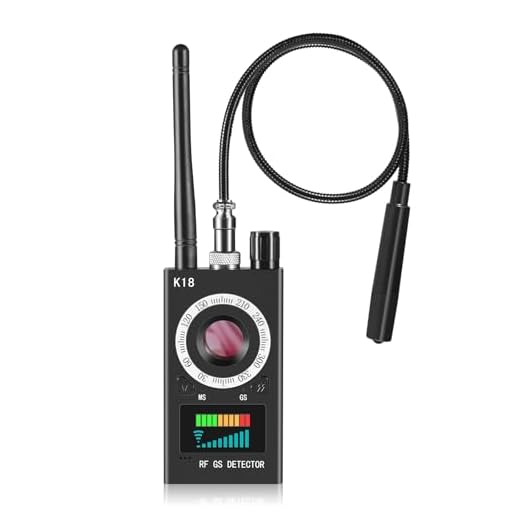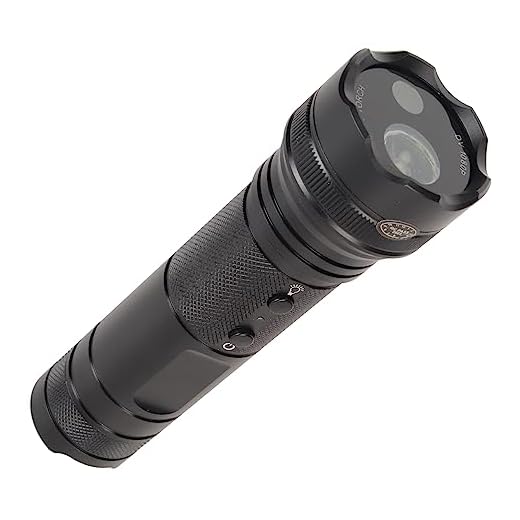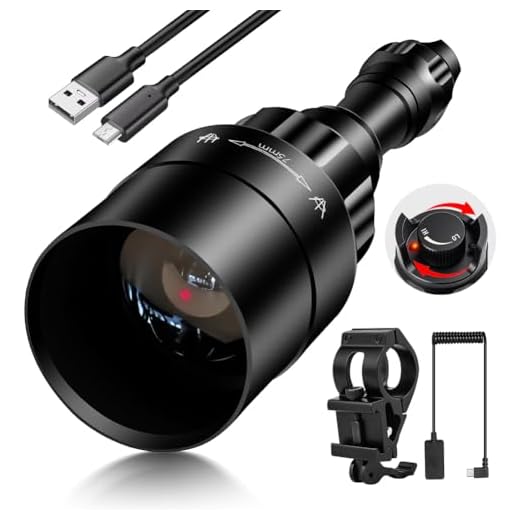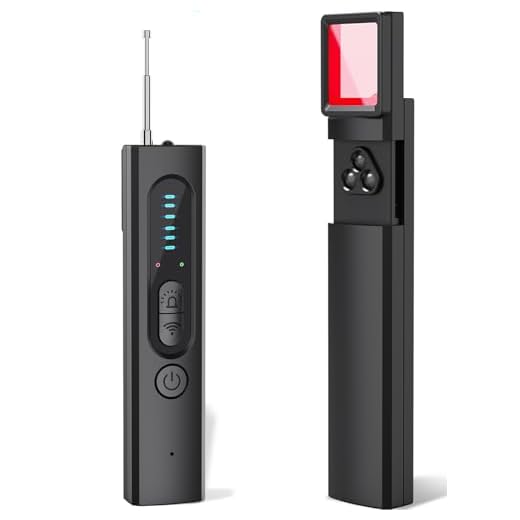
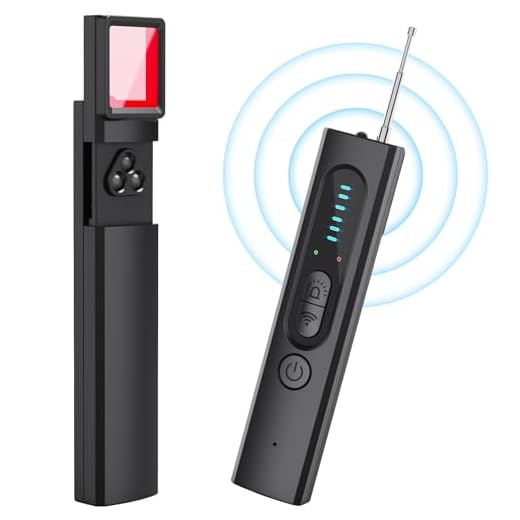


If suspicions arise regarding surreptitious observation or recording, employing a reliable flashlight can be a quick and effective method. By shining a light at various angles across a suspected area, reflections from optical components may reveal the presence of such devices. Pay attention to shiny spots that could indicate a lens hiding in plain sight.
Another practical approach involves utilizing a smartphone application designed for identifying suspicious technology. Many of these apps leverage the phone’s camera or sensors to monitor for unusual transmissions or activity in the vicinity, helping detect potential surveillance operations.
Also, conducting a physical inspection proves beneficial. Look for atypical objects or alterations in familiar surroundings. Wall sockets, smoke detectors, or household items that appear out of place warrant particular scrutiny, as they often serve as clever disguises for recording equipment.
In specific situations, a dedicated RF detector can be employed to scan for wireless signals emitted from clandestine recording devices. These handheld devices help identify operating frequencies, allowing swift detection of active surveillance systems within an area.
Understanding the Basics of Concealed Surveillance Devices
To identify covert recording devices, I recommend familiarizing oneself with the typical characteristics of these gadgets. Many utilize similar technologies, allowing for certain patterns to emerge when inspecting environments. Regular checks for unusual objects, wires, or cameras disguised as everyday items can yield results.
Common Types of Concealed Recording Devices
Familiarity with various forms of these surveillance devices aids detection. Here are some typical categories:
| Type | Description |
|---|---|
| Smoke Detector | Often modified to include a recording device, these may blend seamlessly with residential or office settings. |
| Alarm Clocks | Some designs come equipped with recording equipment, making them perfect for placement on nightstands or desks. |
| USB Chargers | Concealed in plain sight, these may charge devices while enabling video capture. |
| Watches | Fashionable yet functional, some timepieces are outfitted with recording capabilities. |
Signs of Surveillance Equipment
When inspecting a space, I focus on the following indicators:
- Lens reflections: Small glimmers or unusual shine can suggest the presence of a recording device.
- Unusual placement: Surveillance devices placed at odd angles or heights may indicate an attempt at concealment.
- Wire exposure: Any visible cables can point to a device otherwise hidden from direct view.
- Strange noises: Functioning recording equipment may produce faint sounds during operation.
By combining knowledge of common types and signs of these devices, detection efforts can be significantly enhanced.
Common Locations for Concealed Surveillance Devices
Places where surveillance gear is commonly installed include bedrooms, living rooms, and bathrooms. These areas often contain personal interactions, making them prime targets for monitoring. Pay attention to smoke detectors, picture frames, and air purifiers, as these items can conceal recording equipment.
Workspaces and Offices
Offices are frequented by individuals seeking confidential conversations, making them appealing for unseen surveillance. Check inside plant pots, conference room equipment, and even within desk accessories. Wall clocks and USB chargers can also house recording devices that operate silently.
Public Spaces and Restrooms
Restaurants, cafes, and public restrooms frequently feature such instruments disguised among decor items or fixtures. Look for potential recording devices in ceiling tiles, under sinks, or within hand dryers. Remain aware of any suspicious alterations in these environments, as they might signal an invasive presence.
Physical Signs of Concealed Surveillance Devices
Upon entering a room, my eyes are immediately drawn to unusual features that often signify surveillance. Anomalies in the environment can serve as indicators of a monitoring setup. For instance, I always examine smoke detectors or air vents, as these spots can be repurposed to hide recording devices. If I notice a smoke detector facing downwards or shifted from its original position, it raises suspicion.
I pay close attention to the wiring; exposed or tampered wires near electronics often suggest covert installations. Additionally, I look for tiny holes in walls or ceilings. These minute openings can conceal lenses, especially if they are fresh or have been recently painted over. Another sign includes any reflective surfaces. Items like mirrors or picture frames may not be what they seem; a slight distortion could indicate a hidden recording apparatus behind them.
Furniture arrangement can also be telling. If I find objects unusually placed, particularly if they block direct sightlines or appear out of character for the room, I investigate further. Curtains and blinds, if drawn at odd angles, might be concealing something behind them.
Finally, a change in electronic behavior can hint at underlying surveillance; sudden Wi-Fi fluctuations or odd signals from devices could suggest unauthorized monitoring activity. Staying vigilant and aware of these signs helps in identifying potential surveillance challenges.
How to Use Light Reflection Techniques
Utilizing light reflection is a practical method for identifying concealed recording devices. Start by gathering materials that can create reflections, such as a flashlight or a mirror. Position the light source in varying angles around the area where you suspect surveillance equipment may be placed.
When using a flashlight, direct the beam onto surfaces like walls, furniture, or decor. Look for unusual reflections, which may indicate the presence of a lens. Adjust the angle to maximize visibility. Consider using a mirror to reflect light into hard-to-reach spots, enhancing the chance of detecting any suspicious equipment.
Tips for Effective Reflection Checks
1. Focus on glossy or shiny surfaces. These surfaces tend to reflect light more effectively, making it simpler to spot any hidden devices.
2. Use varying intensities. A brighter light may expose lenses more effectively than a dim one. Adjust the brightness settings as needed.
3. Conduct these checks at different times of the day. Natural light can also create reflections; check both during daylight and in darker conditions.
| Technique | Description |
|---|---|
| Flashlight Method | Direct light onto surfaces to find lens reflections. |
| Mirror Angle | Use mirrors to reflect light into tight or concealed spots. |
| Time Variation | Check during different times to utilize natural lighting. |
By applying these techniques consistently, I can increase the chances of uncovering any surveillance devices effectively. Stay vigilant and thorough throughout the process.
Identifying Suspicious Objects in Your Surroundings
Carefully observe your environment for atypical items that might indicate surveillance activity. Items such as smoke detectors, alarm clocks, or electrical outlets may conceal surveillance devices.
Check for unusual arrangements of furniture or decor. A displacement of ordinary objects can suggest that they are being used to hide technology. Pay attention to wires or cables that seem out of place or lead to unexpected areas.
Utilize a flashlight to examine reflective surfaces. Small glints or reflections may indicate the presence of a lens. This can be particularly useful in areas where you suspect covert surveillance.
Consider monitoring devices disguised as everyday objects. Digital assistants, air purifiers, or even picture frames should be inspected closely for extra features that may not align with their primary purpose.
Evaluate the frequency of unfamiliar visitors or deliveries. Regular changes to what’s typically found in your space might signify a heightened interest in your privacy.
Keep an eye out for distinctive features such as odd ventilation patterns or irregular holes, potentially indicating the placement of a recording device.
Trust your instincts; an unsettling feeling regarding the presence of unknown technology is often a valid concern. Regular reassessment of your surroundings can provide peace of mind and enhance your security awareness.
Utilizing a Flashlight to Spot Camera Lenses
Using a flashlight can be a practical method to reveal the reflective surfaces of optical devices. Here’s how to effectively implement this technique:
- Choose a strong flashlight with a focused beam. A LED flashlight works well due to its brightness and focus.
- Turn off all other lights in the area to enhance visibility.
- Shine the light at various angles across suspected surfaces. Pay close attention to areas that might house surveillance gear.
- Look for reflections. The glass elements commonly used in these devices often produce glints when illuminated.
- Check corners, ceilings, decorative objects, and any unexpected fixtures. These are common hiding spots for such equipment.
Additionally, testing different distances from the surfaces can yield varying results in reflection visibility. Move slowly and methodically; a hurried search may lead to missed signs.
Ensure to cover all angles and avoid focusing solely on one spot. This approach can enhance your chances of detecting any surveillance technology present in the vicinity.
The Role of Infrared Light in Detection
To identify surveillance devices, I utilize infrared light, which can reveal many optical components not visible to the naked eye. This method is particularly effective for discerning sensors equipped with infrared capabilities.
Here’s how to effectively use infrared light:
- Operate a handheld infrared flashlight or an infrared filter on a regular flashlight. Shift to a darkened space to enhance visibility.
- Point the infrared source towards reflective surfaces, such as glass or shiny materials. If a surveillance tool is present, you may observe reflections or flashes from the lens.
Understanding how these devices react to infrared can dramatically improve detection efforts:
- Many surveillance tools incorporate infrared for night vision. When engaging infrared, watch for any unexpected illumination or reflection.
- IR light interacts differently with surfaces. Items designed to capture footage might exhibit distinct reactions, making them stand out in infrared light.
Incorporating infrared checks into my search protocol significantly enhances the likelihood of spotting unwanted monitoring devices. This technique provides an extra layer of security awareness and mindfulness in personal environments.
Choosing the Right Smartphone Apps for Detection
When searching for surveillance devices, utilizing specific applications can significantly enhance my ability to identify anomalies. Several applications can facilitate this process effectively.
Recommended Applications
- Fing: This network scanner helps detect connected devices on the same network, revealing unauthorized devices.
- Glint Finder: A specialized app for identifying reflective surfaces commonly found on surveillance devices. It utilizes the phone’s camera to assist in pinpointing suspicious reflections.
- Hidden Camera Detector: Designed for detecting various stealthy devices, this app relies on magnetic field detection and light reflections.
Exploring Features
Look for apps that provide:
- Sensitivity settings for adjusting detection thresholds based on environmental variables.
- Real-time alerts when unexpected devices are detected within the local network.
- Guided interfaces that simplify the scanning process, making it user-friendly.
Carefully evaluate user reviews and app functionality before installation. Frequent updates and a good developer reputation often indicate reliability.
Utilizing the right smartphone applications can enhance my awareness and response capabilities regarding surveillance activities in my vicinity.
Using a Camera Detector Device
Utilizing a dedicated detection device streamlines the process of locating surveillance equipment. These tools can differentiate between ordinary electronic signals and those emitted by recording devices.
When selecting a detection device, consider the following key aspects:
| Feature | Description |
|---|---|
| Sensitivity Levels | A model with adjustable sensitivity ensures versatile usage in various environments. |
| Frequency Range | Opt for devices that cover a broad frequency spectrum to catch a variety of transmission sources. |
| Battery Life | Long-lasting power is crucial for extended surveillance checks. |
| Portability | Compact units are easier to carry and operate in diverse settings. |
Upon acquiring a detection unit, follow these steps for optimal results:
1. Power on the device and adjust the sensitivity settings to suit the environment.
2. Slowly sweep the area, paying close attention to reflections or blinking lights that may indicate unauthorized monitoring.
3. Map out common placement spots such as electrical outlets, smoke detectors, and decorative elements which might be concealing surveillance gear.
4. Document any suspicious readings or anomalies for further investigation.
Incorporating a specialized detection tool enhances the chances of identifying surveillance equipment discreetly and efficiently. This approach maximizes personal privacy safeguards without heightened anxiety.
Examining Mirrors for Hidden Cameras
To uncover surveillance devices behind mirrors, observe their reflection quality. Real mirrors typically reflect images clearly. If a mirror shows blurred or distorted reflections, it could indicate a concealed viewing apparatus behind it.
Utilize a flashlight to exploit light anomalies. Shine the beam at the mirror’s surface. If there’s a hidden unit, the light may reflect differently or create a glare, revealing its position.
Inspect the edges of mirrors for unusual mounting or gaps. If a mirror appears slightly detached from the wall or has cable access points, these can be indicators of intrusive equipment.
Also examine the surfaces for imperfections. Signs, such as fingerprints or smudges that don’t conform to usual wear, might suggest tampering with the mirror in place for surveillance purposes.
Rely on your smartphone’s camera. Some phones can pick up infrared light, which many devices emit when in operation. Pointing your phone at the mirror may help identify any rogue electronics that are otherwise invisible to the naked eye.
Be vigilant about placed mirrors in unconventional locations, such as private spaces or areas lacking natural light, which might heighten the likelihood of surveillance measures being utilized.
Interference from Wi-Fi Signals
To detect surveillance devices, utilize Wi-Fi signal interference as one of the methods. Active surveillance devices often emit signals that intersect with wireless networks. By evaluating areas with fluctuating Wi-Fi performance, I can identify potential locations of these cameras.
How to Analyze Wi-Fi Signals
First, use apps that measure Wi-Fi strength and interference. Observe any unusual dips in quality when within certain areas. A decrease in signal stability may indicate nearby electronic equipment, possibly linked to monitoring devices. Consider utilizing signal analysis tools such as “WiFi Analyzer” or similar applications to scrutinize the environment.
Factors Affecting Wi-Fi Interference
Several factors contribute to Wi-Fi interference. Pay attention to:
| Factor | Impact |
|---|---|
| Physical Barriers | Walls, furniture, and other obstacles can distort signals, hinting at hidden devices. |
| Frequency Bands | Most devices operate at 2.4GHz; observing significant activity here often signals surveillance. |
| Number of Devices | A high density of connected devices can indicate monitoring presence in the vicinity. |
By utilizing these techniques, I assess signal integrity and leverage Wi-Fi interference to potentially uncover surveillance activities. This method, alongside other detection approaches, increases the likelihood of identifying unwanted monitoring. Regularly check Wi-Fi performance in various locations to enhance awareness of possible surveillance threats.
Understanding the Functionality of Lens Filters
I recommend utilizing lens filters in various contexts to enhance image quality and filtering unwanted elements. For instance, a polarizing filter minimizes reflections and glares, providing clearer visuals. This is particularly useful when attempting to capture images of possible surveillance devices, where reflections might obscure the presence of recording equipment.
Utilizing a UV filter protects the actual lens from dust and scratches, while also minimizing ultraviolet light exposure. This can contribute to sharper images, which is beneficial in identifying suspicious items. Additionally, neutral density filters allow for greater control over exposure without changing color balance, helping to highlight unusual objects in a setting.
When employing filters, consider the material and construction quality, as they can greatly impact the visual outcome. High-quality glass filters tend to produce better results than lower-cost alternatives. Additionally, always clean filters regularly to maintain optimal performance and avoid degradation of image clarity.
In conclusion, the strategic use of filters enhances not only photography but also the detection process. By refining visuals, I can better assess environments for any potential recording devices.
Checking for Unexpected Network Connections
Monitor your network traffic regularly using tools like Wireshark or Fing. These applications provide real-time insights into devices connected to your network, helping identify any unauthorized access.
Access your router’s settings to review connected devices. Look for unfamiliar hosts or any devices that don’t belong to your household. Change the Wi-Fi password if you detect suspicious connections.
Utilizing Network Scanning Tools
Employ scanning utilities such as Nmap to detect open ports and services running on your network. It reveals all devices connected and their corresponding traffic, allowing for a thorough analysis.
Examining Data Usage Patterns
Track data usage through your ISP’s portal or a third-party application. Unusual spikes in bandwidth can indicate active surveillance equipment transmitting information without your consent.
Physical Inspection of Electrical Outlets
Begin by inspecting electrical outlets, as these are common locations for surveillance devices. First, verify for signs of tampering, such as misalignments, scratches, or discoloration around the outlet surface. These discrepancies may indicate that an object has been manipulated or attached.
Next, check for unusual features such as small holes or vents in electrical plates. Some surveillance equipment can be built into or disguised as standard outlets, making them less conspicuous. Pay attention to any fresh paint or repairs that seem out of place, as these can be further clues.
Keep an eye out for suspicious wiring or power cords leading to outlets. Devices may be powered by unconventional means, so look for unusual extensions or cords not typically associated with standard electronics.
Utilize a flashlight to inspect closely. Shine the light at varying angles to detect reflections or lens reflections that may not be visible under normal lighting conditions. The light can help reveal surfaces that reflect differently, indicating the presence of surveillance technology.
Document your findings. If you suspect any outlet is compromised, take pictures and gather evidence to support your observations. This could be valuable for further investigation.
Regularly monitor outlets in your vicinity, particularly in spaces where privacy is expected. Conduct this inspection periodically to ensure that any new installations are noted promptly and can be investigated thoroughly.
Searching for Unusual Wi-Fi Networks
Monitoring for unknown Wi-Fi connections can help identify suspicious devices in an environment. Here are steps to effectively carry out this process:
1. Use Your Smartphone
- Enable Wi-Fi settings and refresh the list of detected networks.
- Look for unfamiliar SSIDs that don’t correspond to known networks.
- Pay attention to oddly named networks that might seem out of place.
2. Analyze Network Characteristics
- Check the security protocols of each network; unknown networks using open connections can indicate potential surveillance.
- Look for hidden networks, which will not show up unless specifically scanned.
- Use apps like Fing or Net Analyzer to detect connected devices on local networks.
By consistently scanning for unusual digital presence around you, potential surveillance setups can be flagged for further investigation.
Detecting Hidden Cameras with Security Tools
I recommend using specialized detection equipment for efficient identification of surveillance devices. These tools, such as RF (radio frequency) detectors, can pick up signals emitted by wireless recording devices. Investing in a reliable RF detector can significantly enhance your ability to locate such devices in various environments.
Choosing the Right RF Detector
Look for RF detectors with a broad frequency range, capable of identifying common wireless transmission frequencies. Many models also come with adjustable sensitivity settings, allowing for tailored detection based on your surroundings.
Using Thermal Imaging Technology
Thermal imaging cameras can reveal hot spots where electronic devices are active. This technology is particularly useful when conducting searches in areas with many potential hiding places, as it helps pinpoint locations where devices may be operating covertly.
Regular calibration of your equipment ensures optimal performance. Familiarity with the tool’s features and limitations will enhance your investigative accuracy. Combining multiple detection methods will elevate your chances of uncovering surveillance instruments effectively.
Using a Mobile Phone to Detect RF Signals
Utilizing a smartphone can be a practical method to identify radio frequency emissions. Download specific applications designed for RF signal detection. Popular options include ‘RF Signal Tracker’ and ‘Wifi Analyzer,’ which can help locate abnormal signals.
First, ensure your device has the necessary permissions and that airplane mode is off to allow detection of connections. Open the chosen app and scan the environment for unusual signals. A high number of identified networks or abnormal signal strength may indicate suspicious devices nearby.
For enhanced efficacy, check multiple areas to triangulate potential sources of RF emissions. Devices operating within 2.4 GHz and 5 GHz ranges are common frequencies for surveillance equipment. Pay attention to patterns or disappearing signals, which may suggest the presence of malicious tools.
In addition to apps, consider using the built-in spectrum analyzer feature available on some advanced smartphones, which provides a visual representation of RF activity in your vicinity, aiding in security assessments.
| App Name | Features | Platform |
|---|---|---|
| RF Signal Tracker | Signal strength meter, frequency analysis | iOS, Android |
| Wifi Analyzer | Network identification, channel rating | Android |
Frequently monitor your device for unexpected disconnections or interference, which may indicate nearby surveillance activities. Using a smartphone for RF detection empowers individuals to enhance personal privacy and security effectively.
Importance of Professional Services for Detection
I recommend seeking professional assistance when dealing with surveillance devices. Experts have advanced tools and techniques that enhance detection accuracy significantly.
Professionals can conduct thorough inspections with specialized equipment, such as radio frequency (RF) detectors and advanced camera-finding technology. This not only increases the likelihood of identifying concealed monitoring equipment but also ensures comprehensive coverage of all potential hiding spots.
Additionally, trained specialists possess knowledge about the latest surveillance technology trends, which may not be accessible to the average individual. They can recognize the newest types of devices that may evade standard detection practices.
Utilizing a professional service also provides peace of mind. Knowing that a qualified technician has handled the search can alleviate concerns related to personal safety and privacy infringements.
Furthermore, professionals often offer consultations to provide strategies for enhancing overall security, recommending measures to prevent future unauthorized surveillance. This proactive approach contributes to long-term protection and reassurance.
Potential Legal Concerns of Camera Detection
Before taking any steps to identify surveillance devices, consider the legal implications. I advise consulting privacy laws in your jurisdiction, as regulations vary. Misuse of detection methods may lead to legal repercussions.
Some specific points to keep in mind include:
- Recording or attempting to identify devices in private spaces without consent may violate laws regarding privacy and trespass.
- Using detection tools that interfere with other electronic devices can lead to legal issues, particularly in public spaces.
- Possessing or utilizing equipment solely for the purpose of detecting surveillance devices may raise suspicions and legal concerns.
- If caught removing or damaging surveillance equipment, criminal charges can be pursued against the individual.
Always document your findings meticulously. If harassment or misconduct is suspected, report findings to law enforcement officials rather than taking individual action. Professional assistance might be necessary for sensitive situations.
Finally, be aware that while detecting devices can be important for personal security, navigating the legal landscape is essential to avoid complications.
Disguising Detection Activities in Public Spaces
Employing discreet methods enhances the likelihood of identifying surveillance devices without drawing attention. Below are effective strategies for remaining inconspicuous while inspecting surroundings.
- Maintain a natural posture. Utilize casual gestures, such as adjusting clothing or checking your phone, to create a nonchalant appearance.
- Position yourself strategically. Stand in areas with natural obstructions like trees or furniture to shield activities from passersby while maintaining a clear line of sight to potential threats.
- Engage in conversation. Speaking with a companion can provide a cover for scanning for surveillance devices, allowing for a more relaxed pace of inspection.
- Use reflective surfaces. Casually looking at reflections in windows or mirrors can help spot devices without direct observation.
In crowded venues, employ common objects as tools for detection:
- Using sunglasses, angle them to see reflections that might indicate the presence of recording equipment.
- A hat or cap can be adjusted to shield the line of sight while allowing for discreet scanning of more open areas.
Consider blending inspection methods into routine activities:
- While leaning against a wall to rest, subtly check hanging decorations or fixtures that could conceal apparatus.
- When seated, angle your body to casually survey the area without making it obvious that a search is underway.
Employing technology can also aid in maintaining a low profile. Mobile applications designed for detecting signals can be used without drawing suspicion:
- Access the app casually. Do not focus entirely on the screen; glance occasionally to maintain a natural demeanor.
- Combine usage with a phone call to appear occupied, making the activity less noticeable to those around.
Understanding the layout of your location allows for strategic planning. Familiarize yourself with exits and popular gathering areas, as these often house recording devices. Attention to detail and situational awareness can significantly enhance your ability to detect surveillance without attracting unwanted attention.
Using a Thermal Imaging Camera for Detection
Utilizing a thermal imaging device can be highly beneficial in identifying surveillance devices. These tools detect variations in temperature, allowing me to pinpoint electronic equipment that may emit heat. I first ensure that I operate in a dimly lit environment to enhance detection capabilities.
While scanning an area, I focus on potential spots such as walls, ceilings, and furniture where electronic items might be concealed. The thermal imager displays areas of different temperatures, highlighting unusually warm spots that could indicate active machinery. As I move the device, I remain aware of the heat signatures, especially during moments of activity, as they may increase temperature output.
It is crucial to remain patient and thorough during this process. Some devices may not show significant heat differences, depending on their design or usage. If I suspect a certain area, I may hold the thermal camera steady for a few moments to see if there are any consistent hot spots. This method is particularly useful in locating equipment that operates intermittently or is camouflaged.
In addition, I often combine the use of thermal imaging with other detection methods, creating a comprehensive approach to surveillance identification. This combination increases the likelihood of uncovering surveillance activities that may otherwise go unnoticed.
Understanding Different Types of Hidden Cameras
Focusing on various forms of covert recording devices aids in improving detection strategies. Devices come in multiple shapes and sizes, ranging from typical pinhole units to those cleverly disguised as everyday objects. Each type has distinct features influencing how they operate and how they can be identified.
Common Forms of Covert Recording Devices
Commonly encountered models include smoke detectors, alarm clocks, and even charging adaptors. These units often blend seamlessly into their environment, making them challenging to notice. Some may possess advanced functionalities, such as motion detection or night vision, elevating their stealth capabilities. Recognizing their forms increases awareness and aids in effective searches.
Emerging Technologies
As technology advances, new models such as Wi-Fi-enabled devices become prevalent. These units often allow remote access and monitoring, complicating detection. Familiarity with these innovations ensures vigilance and prepares one to spot such devices, particularly in areas of concern.
Recognizing the Signs of Tampering with Objects
To identify potential interference with objects around you, observe several key indicators.
- Check for unusual scratches, marks, or residue on surfaces that seem tampered with.
- Look for inconsistencies in the sheen or finish of objects, which may suggest alteration or installation of devices.
- Inspect seams or joints closely; abnormal openings can indicate modifications.
- Notice any loose parts or objects that appear unsteady; this may hint at added equipment.
- Pay attention to electronic devices that have unexpected behaviors or settings, signaling possible unauthorized access.
Physical presence of new or unfamiliar items can serve as a further red flag. If an object stands out or feels out of place, investigate thoroughly.
- Evaluate objects for uncharacteristic placement compared to their usual arrangement.
- Gather insight from household members or colleagues about any recent changes in the environment.
Relying on these observations minimizes risk while safeguarding privacy and security. Regular inspections cultivate an awareness of modifications in familiar spaces.
Implementing Personal Safety Measures
To enhance personal security, I prioritize awareness of my surroundings. Keeping a mental checklist of spots where surveillance devices may lurk helps me stay vigilant. I avoid secluded areas and opt for more populated spaces when possible.
Utilizing Technology for Detection
Employing technology can further bolster my safety. I download apps specifically designed to pinpoint broadcasting signals from surveillance devices. Regularly scanning my environment with my smartphone enables me to identify suspicious frequencies. Additionally, using a signal detector offers real-time alerts when signals are present.
Conducting Routine Inspections
I conduct thorough checks around personal spaces. Observing furniture, decorative items, and electronic devices is crucial. Anomalies such as unrecognized objects or unfamiliar wires can indicate tampering. Regular inspections not only reveal potential threats but also create a habit of vigilance.
| Safety Measure | Description | Frequency |
|---|---|---|
| Aware Environment | Stay alert to unusual behavior or items. | Daily |
| App Utilization | Use signal detection apps for smartphone. | Weekly |
| Physical Inspections | Examine surroundings carefully for tampering. | Monthly |
In public areas, I adopt discreet tactics to explore safety concerns. Minimizing attention while inspecting surroundings helps avoid drawing unwanted notice. Knowledgeably implementing these strategies amplifies my sense of security and provides peace of mind.
How to Report Findings of Concealed Surveillance Devices
I recommend documenting my findings meticulously. Take photographs or videos to provide evidence of any suspicious items discovered. Ensure that these visuals are clear, showcasing the context and surroundings.
Contact local law enforcement with detailed information. Prepare to share my findings and explain the reasons for my concerns. If applicable, provide them with the evidence I have collected.
Consider reaching out to privacy advocacy groups to report potential violations. They can offer additional support and guidance on how to navigate the situation.
If I encounter surveillance devices in personal or rental spaces, inform the property owner or management immediately. Keep a record of all communications regarding the issue.
Should I suspect misuse of surveillance technology in a workplace, I would follow the company’s reporting procedures, addressing the concern with HR or an employee representative. Documenting all steps taken will be beneficial for future reference.
Always be cautious about discussing any findings in public to avoid alerting possible offenders. Keeping communication discreet is paramount while addressing these serious concerns.
DIY Methods for Camera Detection
I recommend a few practical, hands-on techniques. Each method offers a different angle for identifying discreet surveillance devices.
- Utilize a bright flashlight: Shine it around suspect areas. The glass of a recording device will often reflect light differently, making it detectable.
- Use your smartphone: Download specialized applications designed to identify wireless signals. These tools can help unveil devices transmitting data.
- Inspect common hiding spots: Look inside smoke detectors, picture frames, and air vents. These locations often serve as clever concealment options.
- Test with RF detectors: These devices are specifically tuned to pick up radio frequencies emitted by recording devices. Carry one for thorough scans in unfamiliar environments.
- Focus on reflective surfaces: Mirrors can mask recording equipment. Check for unusual placements or signs of tampering.
- Scan for strange networks: Open your Wi-Fi settings and examine connected devices. Unrecognized networks could indicate the presence of surveillance equipment.
- Deploy thermal imaging devices: Temperature variations can reveal concealed devices that emit heat during operation.
Implementing these methods allows for a more comprehensive investigation of your surroundings. Always exercise caution and prioritize personal safety during your search.
Understanding Privacy Laws Related to Surveillance Devices
I recommend familiarizing yourself with privacy regulations relevant to surveillance devices. In many jurisdictions, laws vary significantly regarding the legality of recording individuals without their consent, particularly in private settings.
Be aware that consent can often be established verbally or in writing. However, in public locations, expectations of privacy lessen, and recording may not constitute a violation of laws. It’s vital to consult local statutes to determine the specifics of permissible monitoring.
Some key insights about legal aspects include:
| Aspect | Details |
|---|---|
| Recording Consent | Majority of states require at least one party’s consent for audio recordings. Video recording laws may differ. |
| Public vs. Private Spaces | Recording in public places generally does not violate privacy rights, whereas private areas necessitate consent from those being filmed. |
| Penalties | Violation of privacy laws can lead to fines, civil lawsuits, or criminal charges. |
| Installation of Devices | Placing surveillance devices without notification in properties can attract severe legal repercussions. |
| Law Enforcement | Law enforcement agencies often have additional guidelines and protocols for surveillance and recording activities. |
Consulting with a legal expert to clarify local rules and ensure compliance is advisable, especially if you suspect monitoring in your vicinity. Being informed empowers you to protect your rights effectively and take appropriate action when necessary.
Spotting Hidden Cameras in Hotel Rooms
Begin by thoroughly inspecting the area around your accommodations. Pay close attention to items that may seem out of place:
- Check smoke detectors, air filters, and other electronic devices for unusual features or odd placements.
- Examine wall decorations and alarm clocks for potential surveillance devices integrated within.
- Look for small holes or reflective surfaces that could disguise recording equipment.
Utilize a flashlight to identify reflective surfaces that may indicate the presence of recording devices. Shine the light around the room, focusing on objects that are often overlooked.
In addition, consider using your smartphone to detect unusual Wi-Fi connections or suspicious networks that might be broadcasting signals from surveillance technology:
- Access your phone’s Wi-Fi settings to search for unrecognized networks.
- Download specific applications designed to identify local signals.
Conduct a physical inspection of electrical outlets and cables. Look for devices connected inconspicuously that might be transmitting video or audio feeds.
Utilizing a thermal imaging device provides insight into hidden technology that might not be visible to the naked eye. This can uncover devices operating on battery or electricity.
If concerns about privacy arise, professional detection services are an option. They possess specialized tools to identify surveillance gear effectively.
Stay alert for any signs of tampering on personal belongings, as alterations might indicate the presence of monitoring tools. Reporting any findings to hotel management can help address potential breaches of privacy.
Lastly, familiarize yourself with local privacy laws regarding surveillance. Understanding your rights can empower you to take action if invasive devices are discovered.
Utilizing Professional Sweeps in Sensitive Areas
Engaging specialized services for thorough inspections in vulnerable environments is a prudent measure. When considering this, choose agencies equipped with advanced technology for detecting surveillance devices, as they provide a detailed evaluation beyond basic checks. Ensure they utilize RF detectors, infrared sensors, and comprehensive imaging systems to accurately identify unauthorized equipment.
Benefits of Professional Sweeps
Employing experts offers multiple advantages:
| Advantage | Description |
|---|---|
| Expertise | Trained professionals understand various device types and their placements. |
| Advanced Tools | Access to high-end equipment ensures thorough detection capabilities. |
| Confidentiality | Discretion is maintained throughout the inspection process. |
| Comprehensive Reports | Receive detailed findings, including recommendations for enhanced security. |
Common Areas for Professional Sweeps
Typically, focus inspections in these sensitive locations:
| Location | Reason |
|---|---|
| Corporate Offices | Concerns about corporate espionage and confidential information breaches. |
| Hotels | Risk of unauthorized monitoring in guest accommodations. |
| Private Residences | Personal privacy threats from invasive monitoring devices. |
| Public Restrooms | Observed misuse leading to safety violations and privacy breaches. |
Timely and regular inspections by professionals can mitigate risks significantly, ensuring environments remain secure and private. Such measures are not only about detecting devices but also about penalizing those involved in unauthorized monitoring activities. Prioritize thorough investigations in spaces that require utmost confidentiality and security.
Analyzing Video Surveillance in Your Area
During my investigations, I’ve found that a thorough examination of the surroundings can reveal critical insights. Begin with a systematic approach to observe your environment:
- Check for unusual devices or objects that may not belong in a typical setting.
- Pay attention to the orientation of items; objects placed at odd angles might indicate monitoring intentions.
- Examine the placement of mirrors, as modified surfaces might serve a dual purpose.
- Look for tiny holes or gaps in walls or ceilings, as these could conceal advanced monitoring devices.
Utilizing reflective surfaces can significantly aid in identifying surveillance equipment. Incorporate the following methods:
- Use your phone’s flashlight at various angles to catch reflections off potential equipment.
- Investigate areas with suspected infrared sources, as these may indicate the use of night vision devices.
Analyzing wireless networks can also provide clues. I suggest performing these actions:
- Check for unidentified networks that may operate in the vicinity.
- Inspect electrical outlets for signs of tampering that could suggest device connectivity.
In public places, remain discreet in your detection efforts. Employ these strategies:
- Listen for faint electronic noises, which might suggest the presence of equipment nearby.
- Conceal your inspection methods to avoid drawing attention.
Enhancing my personal safety measures includes regular reporting of any suspicious findings to authorities. I also consider engaging professional services for thorough sweeps in sensitive locations.
The Role of Audio Analysis in Detecting Cameras
Utilizing sound analysis techniques can be a powerful approach in identifying surveillance devices. By paying attention to specific audio patterns, I can gain insights into the presence of various recording tools.
Key methods include:
- Listening for Mechanical Sounds: Many recording devices produce subtle noises, such as motors or lens movements. I can hone in on unfamiliar sounds in a quiet environment.
- Using Sound Frequencies: Some devices operate on specific sound frequencies. Employing audio spectrum analyzers, I can identify these frequencies to detect unusual activity.
- Monitoring Ambient Noise Changes: A sudden change in background noise, such as an increase in electronic humming, may indicate the activation of a nearby recording device.
In addition to these methods, employing specialized audio detection software can help analyze surrounding sounds for anomalies that might point to surveillance devices at play.
Overall, being attuned to audio cues can significantly enhance my ability to uncover devices in various settings, contributing to greater privacy protection. By integrating audio analysis with other detection strategies, I improve my chances of identifying unwanted surveillance effectively.
Multi-Device Approaches to Detection
Utilizing multiple devices simultaneously enhances the likelihood of identifying concealed recording devices. Each method contributes unique strengths.
- Smartphone Applications: I download apps designed to detect remote signals. These often utilize the phone’s sensors to identify suspicious activity.
- RF Detectors: A dedicated radio frequency detector provides targeted analyses for detecting emissions from various devices.
- Thermal Imaging Cameras: Devices equipped with thermal sensors reveal temperature fluctuations indicative of operational electronics.
- Binoculars or Zoom Lens Cameras: High-magnification optics allow me to inspect distant areas for unnatural objects and reflections.
Incorporating these technologies improves my chances of detection and augments the effectiveness of my search efforts. By cross-referencing findings across devices, I enhance my understanding and gain confidence in identifying potential surveillance devices.
Always ensure that each device is utilized appropriately and efficiently to maximize discovery potential in various environments.
Timing Your Search for Maximum Effectiveness
During the investigation, conducting searches at specific times significantly increases detection potential. Early mornings or late evenings often provide fewer disturbances and distractions. Lighting conditions also influence results; searching in low-light scenarios can enhance visibility of reflective surfaces.
Optimal Timing Considerations
Monitor peak activity hours in the location to minimize interruptions. For instance, hotel corridors are usually quieter during mid-afternoon when guests are occupied. Additionally, weekends might yield less foot traffic in shared spaces, allowing thorough inspections without drawing attention.
Seasonal Influences
Variations in seasonal daylight can be advantageous. Longer daylight hours in summer may aid in spot-checking areas that might remain concealed during darker months. Furthermore, fluctuating outdoor temperatures can impact electrical performance in residential settings, revealing concealed devices when systems are under strain.
Understanding the Technology Behind Concealed Recording Devices
Familiarize yourself with how these devices operate to enhance detection efficiency. Most compact recording devices utilize miniature sensors that capture either video or audio, often transmitting this data wirelessly. Knowing the specifications of these sensors can assist in identifying possible sources of surveillance.
Types of Sensors and Their Functions
Common types include CMOS and CCD sensors. CMOS sensors are frequently found in budget-friendly recording units due to their low power consumption, while CCD sensors are favored for superior image quality. This variance can help pinpoint the potential capabilities of an unknown device.
Connection Methods
Wireless technology such as Wi-Fi and Bluetooth is prevalent among these devices, allowing remote access. Recognizing unusual network signals or connections can indicate the presence of surveillance technology nearby. Utilizing network scanning tools can assist in identifying unrecognized devices operating on your local network.
Understanding these technological aspects will significantly enhance your ability to detect concealed recording devices in various environments. Be vigilant and informed about the attributes of potential surveillance equipment.
Building Awareness of New Surveillance Trends
Stay informed about emerging technologies and methodologies that increase privacy concerns. Monitor developments in miniaturization and wireless communications that enable covert recording and monitoring.
Participate in community discussions or online forums on surveillance practices to understand new tactics employed by privacy intruders. Engaging with peers can provide insights into local developments and techniques.
Utilize educational resources and workshops that focus on personal security and detection methods. Gaining knowledge in recent detection technologies equips one with tools to identify unauthorized monitoring.
Monitor social media and news outlets for updates on products and services tailored for personal privacy. Many innovation hubs discuss advancements that could affect privacy standards and regulations.
Form alliances with local privacy advocacy groups. These organizations often conduct awareness campaigns and can keep individuals informed about recent surveillance trends and protective measures.
Regularly review personal digital footprints and modify security settings on devices to minimize exposure. Be proactive by ensuring software and applications are up to date, as many updates include privacy enhancements.
Encourage discussions on surveillance ethics and regulations within your network, creating a culture that prioritizes individual privacy rights and promotes responsible use of technology.
Lastly, familiarize oneself with laws regarding surveillance in various jurisdictions to better understand what constitutes illegal monitoring, empowering individuals to act when necessary.
Networking with Others for Detection Information
Connect with communities focused on surveillance detection through online forums and social media groups. Engaging with individuals who share similar concerns provides access to shared experiences and effective strategies.
Attend local workshops or seminars dedicated to security and privacy. These events facilitate networking opportunities, allowing conversations with professionals in the field and fellow attendees who may have valuable insights.
Collaborate with local advocacy groups that prioritize privacy rights. These organizations often have resources and knowledge about recent surveillance technologies and detection methods. By participating in their activities, I can expand my network and gain vital information.
Utilize platforms like Reddit or specialized websites where people discuss detection techniques. Subreddits focused on privacy or security can offer real-time updates on new technologies or methods to identify intrusive devices.
Share findings with trusted friends or colleagues. Creating a small group dedicated to monitoring and reporting suspicious activity fosters collective vigilance and resource sharing.
Engage with local law enforcement or security professionals regarding community safety. Having them as contacts helps in learning about the latest trends in surveillance and detection, and they may offer assistance in specific cases.
Consider forming a neighborhood watch specifically aimed at monitoring privacy concerns. Collective efforts can lead to increased vigilance and better outcomes in identifying suspicious technologies.
Importance of Keeping Updated on Detection Techniques
Staying informed about current strategies for identifying surveillance devices greatly enhances personal security. Knowledge of the latest advancements allows me to adapt to evolving technologies that intruders might employ. Regularly checking for new methods not only helps in keeping vigilance sharp but also empowers me to effectively safeguard my privacy.
Integration of New Tools and Technologies
Utilizing cutting-edge detection tools can significantly improve results. For instance, incorporating smartphone applications designed to analyze signal frequencies or employing modern RF detectors can provide comprehensive coverage. Joining forums and groups dedicated to security awareness keeps me updated on the latest gadgets and software that enhance my surveillance detection skills.
Awareness of Legal Ramifications
Understanding laws surrounding surveillance can guide my approach to detection. Staying informed about potential legal issues in my jurisdiction ensures that my actions remain compliant. This knowledge not only safeguards against unintentional legal violations but also enables me to take informed steps when reporting suspicious activities.
FAQ:
How can I detect hidden camera lenses?
There are several methods to detect hidden camera lenses. One of the most effective ways is to use a flashlight. Shine the flashlight around the area where you suspect a camera might be hidden; the lens will reflect the light and appear as a small, bright spot. Another method is to use your smartphone’s camera; some lenses will reflect light or can create a glare that may not be visible to the naked eye. Additionally, specialized devices called RF detectors can scan for wireless signals emitted by hidden cameras, helping you identify their locations. It’s important to check common hiding spots such as smoke detectors, air purifiers, or picture frames where a camera might be concealed.
Are there any specific tools or techniques for finding hidden cameras in hotels or rental properties?
Yes, when checking for hidden cameras in hotels or rental properties, you can use several tools and techniques. A flashlight is one of the simplest tools; it can help you spot camera lenses by reflecting light. Additionally, using an app on your smartphone that detects Wi-Fi networks can help identify any unfamiliar devices connected to the Internet, which might indicate the presence of a hidden camera. You can also bring a portable RF detector that can scan for wireless signals associated with hidden cameras. Furthermore, performing a thorough visual inspection of the room, checking areas like behind mirrors, within electronic devices, or in vents, can also be effective. If you find a suspicious object, it’s wise to report it to the property management for further investigation.


